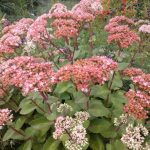
Our 2022 Big Fall Sale continues, with 30% off most plants!
Sept. 13 thru 18 take 30% off perennials, shrubs, and trees, and 20% off roses, soil products in big bags, books, and 20% off Compost Tea. (No discount on fruit trees, veggie starts, bulbs, and 2023 seeds).
We’ve added lots of timely COVER CROP SEEDS and BEEKEEPING SUPPLIES to our DEEP DISCOUNT offers!
In our experience, fall is the most successful time to establish most plants, especially when mycorrhizae are applied to the roots during planting (and we’re well stocked with several types of mycorrhizae!). We have a large and diverse selection of perennials, particularly in larger quart and gallon sizes, that are ready for planting. (Photo: Sedum “Matrona”)

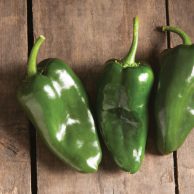
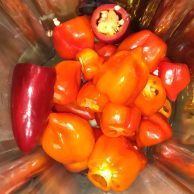
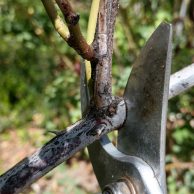 We recently passed Boulder Valley’s “average last frost” date (May 9).With all this rain, it sure feels like Spring! Lots of gardeners are asking if it’s safe to prune now, especially roses and shrubs. The answer is YES! But…..
We recently passed Boulder Valley’s “average last frost” date (May 9).With all this rain, it sure feels like Spring! Lots of gardeners are asking if it’s safe to prune now, especially roses and shrubs. The answer is YES! But…..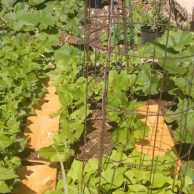 Okay, you prepared your soil and planted your vegetable garden with all kinds of wonderfully flavorful, nutritious foods, you’re watering and watching them grow, and wondering ….. When can I start to eat them, how do I harvest them, and how do I get the most out of these plantings? Here are some tips on vegetable crops harvest timing and techniques that may not be self-evident. Even if you’re a seasoned gardener, you may not be aware of some of these procedures!
Okay, you prepared your soil and planted your vegetable garden with all kinds of wonderfully flavorful, nutritious foods, you’re watering and watching them grow, and wondering ….. When can I start to eat them, how do I harvest them, and how do I get the most out of these plantings? Here are some tips on vegetable crops harvest timing and techniques that may not be self-evident. Even if you’re a seasoned gardener, you may not be aware of some of these procedures! 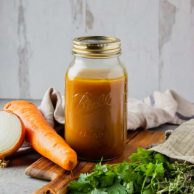
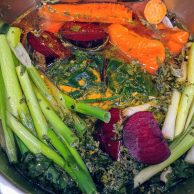
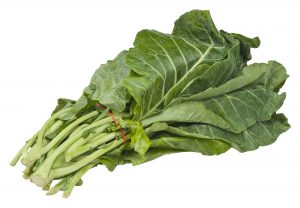
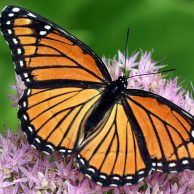 Monarch butterflies previously considered Threatened, have now been classified as Endangered by the International Union for Conservation of Nature, the world’s most comprehensive scientific authority on the status of species. Two major driving factors are habitat loss (and thus, food loss), and climate change.
Monarch butterflies previously considered Threatened, have now been classified as Endangered by the International Union for Conservation of Nature, the world’s most comprehensive scientific authority on the status of species. Two major driving factors are habitat loss (and thus, food loss), and climate change. 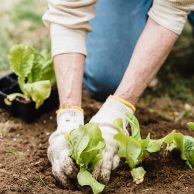 We are here for you! You’re in the high desert/steppe now, with short growing seasons, sudden temperature changes, unpredictable precipitation, low humidity, drying winds, alkaline soils that are low in organic matter and nitrogen, hot summers and cold winters. Despite these challenges, gardens can thrive here, and be productive, rewarding and beautiful!
We are here for you! You’re in the high desert/steppe now, with short growing seasons, sudden temperature changes, unpredictable precipitation, low humidity, drying winds, alkaline soils that are low in organic matter and nitrogen, hot summers and cold winters. Despite these challenges, gardens can thrive here, and be productive, rewarding and beautiful!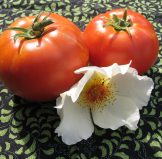 The bad news is that last week’s small delivery of tomato starts froze when the wind blew open the back door of our greenhouse in the middle of the night.
The bad news is that last week’s small delivery of tomato starts froze when the wind blew open the back door of our greenhouse in the middle of the night.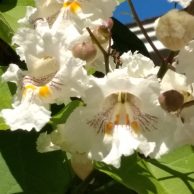 So they can support us!
So they can support us!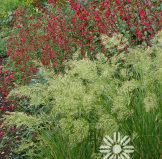
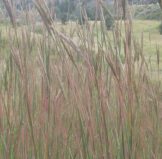 Native! Big Bluestem is taller and has a wider blade than Little Bluestem and is somewhat upright but also arching. It also has attractive reddish and purple fall colors. Big Bluestem is one of the dominant components of the Tallgrass Prairies across the Great Plains, where it can reach 8’ in height. Here it can range from 2 to 5’ tall, depending on water and nutrients available. In late summer, Big Bluestem’s purplish red flowers appear in groups of three or six, which look like a turkey foot – hence the nickname: “Turkey Foot Grass”. The root system can extend down more than 10 feet. Each year, a third of these roots die, feeding soil microorganisms and opening up channels for water. This plant is drought tolerant once it’s established. Attracts birds and butterfly larvae.
Native! Big Bluestem is taller and has a wider blade than Little Bluestem and is somewhat upright but also arching. It also has attractive reddish and purple fall colors. Big Bluestem is one of the dominant components of the Tallgrass Prairies across the Great Plains, where it can reach 8’ in height. Here it can range from 2 to 5’ tall, depending on water and nutrients available. In late summer, Big Bluestem’s purplish red flowers appear in groups of three or six, which look like a turkey foot – hence the nickname: “Turkey Foot Grass”. The root system can extend down more than 10 feet. Each year, a third of these roots die, feeding soil microorganisms and opening up channels for water. This plant is drought tolerant once it’s established. Attracts birds and butterfly larvae.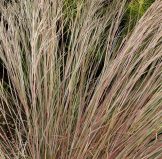
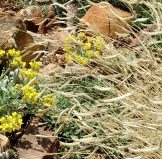
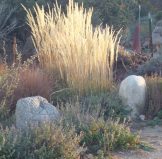 The most popular and over-used ornamental grass, for good reason. Medium sized (to 4’ tall), very erect form, easy to grow and highly adaptable to everything but shade, very durable flower/seed heads remain attractive all summer, fall and winter. No fall foliage color. Cut down in early February. Try to avoid plantings that look like rows of soldiers standing at attention!
The most popular and over-used ornamental grass, for good reason. Medium sized (to 4’ tall), very erect form, easy to grow and highly adaptable to everything but shade, very durable flower/seed heads remain attractive all summer, fall and winter. No fall foliage color. Cut down in early February. Try to avoid plantings that look like rows of soldiers standing at attention!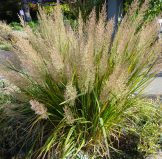 To 3’ or 4’ tall, with a graceful fountain-like or mounded shape, and waits until the end of the summer to flower. Can take some shade. Very pretty, with pinkish plumes that dry tan. No fall color. Plant Select. Should be used more.
To 3’ or 4’ tall, with a graceful fountain-like or mounded shape, and waits until the end of the summer to flower. Can take some shade. Very pretty, with pinkish plumes that dry tan. No fall color. Plant Select. Should be used more.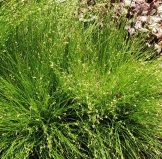 A small fountain-like clumping sedge, 6-10”h x 10-12” w, very fine-textured, bright light green and very attractive. Native to woods in Eastern N. America, it grows well in dry shade or part shade. It mixes well with perennials and serves as a neat groundcover or edger. Its tenacious roots will prevent erosion on shady slopes, and it can grow among tree roots. Very small, attractive blooms occur in spring, supporting beneficial insects.
A small fountain-like clumping sedge, 6-10”h x 10-12” w, very fine-textured, bright light green and very attractive. Native to woods in Eastern N. America, it grows well in dry shade or part shade. It mixes well with perennials and serves as a neat groundcover or edger. Its tenacious roots will prevent erosion on shady slopes, and it can grow among tree roots. Very small, attractive blooms occur in spring, supporting beneficial insects.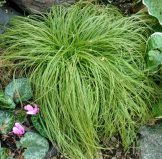 This petite sedge is rhizomatous and spreads. Its long glossy blades are slightly variegated yellow and green, and curve to the ground, giving it a mop-headed look. Makes an excellent groundcover or small ‘lawn’ (just to look at, not to step on) in shady gardens, especially Asian-styled gardens. Almost evergreen.
This petite sedge is rhizomatous and spreads. Its long glossy blades are slightly variegated yellow and green, and curve to the ground, giving it a mop-headed look. Makes an excellent groundcover or small ‘lawn’ (just to look at, not to step on) in shady gardens, especially Asian-styled gardens. Almost evergreen.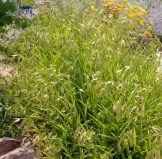 A US native, though not native here, this grass grows well in part shade. The wide, bright green blades emerge from the stems at many heights, giving it a slightly bamboo-like look. The pendulous seed clusters in late summer are composed of very attractive flat, plaited spikelets, starting out pale green, later turning tan. Foliage stays green until fall, when it turns yellow. It will self-sow but is not difficult to control.
A US native, though not native here, this grass grows well in part shade. The wide, bright green blades emerge from the stems at many heights, giving it a slightly bamboo-like look. The pendulous seed clusters in late summer are composed of very attractive flat, plaited spikelets, starting out pale green, later turning tan. Foliage stays green until fall, when it turns yellow. It will self-sow but is not difficult to control.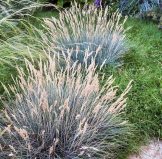
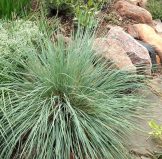 A much sought-after modest-sized evergreen grass with powder-blue blades, and that has some shade tolerance. It forms an open, symmetrical mound of foliage from 12” to 24” high, and a bit wider, looking like the ‘big brother’ of Blue Fescue. Bloom stalks add another 12 to 18”, and provide interest for several months.
A much sought-after modest-sized evergreen grass with powder-blue blades, and that has some shade tolerance. It forms an open, symmetrical mound of foliage from 12” to 24” high, and a bit wider, looking like the ‘big brother’ of Blue Fescue. Bloom stalks add another 12 to 18”, and provide interest for several months.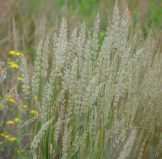
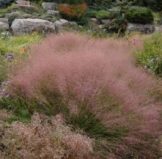
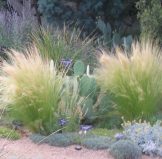 Also known as Ponytail Grass, this small grass, to 14” tall, has very fine-textured blades that make a ‘fountain’ of green. It can sometimes be evergreen. This grass may not be very long-lived, but will replace itself with seedlings, which can be relocated when small.
Also known as Ponytail Grass, this small grass, to 14” tall, has very fine-textured blades that make a ‘fountain’ of green. It can sometimes be evergreen. This grass may not be very long-lived, but will replace itself with seedlings, which can be relocated when small.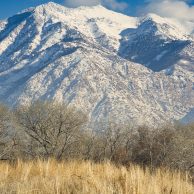 Historically February is one of Colorado’s snowiest months, and finally we’re beginning to see evidence of that this year! Additionally, the forecast indicates more to come. It remains to be seen how some of our marginally hardy garden plants have suffered from the below zero temperatures.
Historically February is one of Colorado’s snowiest months, and finally we’re beginning to see evidence of that this year! Additionally, the forecast indicates more to come. It remains to be seen how some of our marginally hardy garden plants have suffered from the below zero temperatures.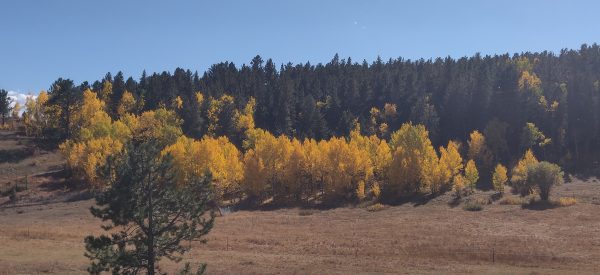
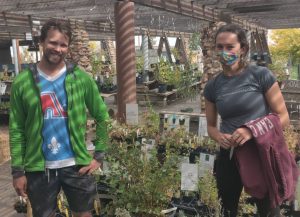 Our 2022 Fall Members-Only Sale has finished, and now our Big Fall Sale has begun, with 20% off for everyone! Plants included in this week’s sale are:
Our 2022 Fall Members-Only Sale has finished, and now our Big Fall Sale has begun, with 20% off for everyone! Plants included in this week’s sale are: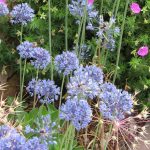 Allium caeruleum (syn. A. azureum) (Blue Globe Onion)
Allium caeruleum (syn. A. azureum) (Blue Globe Onion)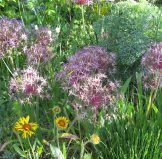 A most surprising, outrageous flower for xeriscapes! The giant globes, to 10” diameter or more, are held on fairly short stems, 8”-18” tall, blooming in mid-spring. The hundreds of starry, silver-lavender florets each have a green ‘eye’ are arranged so that their petal-tips touch to form a perfect sphere. This easy naturalizer has been highly successful in our xeriscape display gardens, eliciting lots of interest. Also spectacular in large flower arrangements, fresh or dried.
A most surprising, outrageous flower for xeriscapes! The giant globes, to 10” diameter or more, are held on fairly short stems, 8”-18” tall, blooming in mid-spring. The hundreds of starry, silver-lavender florets each have a green ‘eye’ are arranged so that their petal-tips touch to form a perfect sphere. This easy naturalizer has been highly successful in our xeriscape display gardens, eliciting lots of interest. Also spectacular in large flower arrangements, fresh or dried.
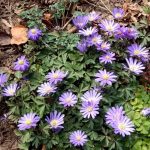 An enchanting, early-blooming member of the Buttercup family that grows from a tuber. Where happy, it spreads to form a carpet-like groundcover with ferny deep green foliage and 1”- wide open-faced sky-blue daisy flowers with yellow eyes. Provides a long-lasting display in early spring.
An enchanting, early-blooming member of the Buttercup family that grows from a tuber. Where happy, it spreads to form a carpet-like groundcover with ferny deep green foliage and 1”- wide open-faced sky-blue daisy flowers with yellow eyes. Provides a long-lasting display in early spring.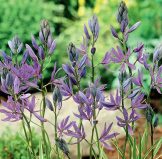
 Waterlily Autumn Crocus
Waterlily Autumn Crocus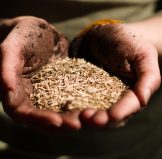 “The less biodiverse any system is, the greater the potential for its collapse.” Janisse Ray, from The Seed Underground: A Growing Revolution to Save Food.
“The less biodiverse any system is, the greater the potential for its collapse.” Janisse Ray, from The Seed Underground: A Growing Revolution to Save Food.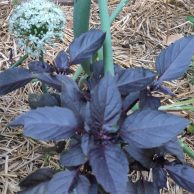 Basil is one of the great culinary pleasures of summer, and it’s definitely NOT TOO LATE to plant Basil and enjoy a good crop! Basil plants are beautiful, grow equally well in the ground or in pots, thrive in hot weather, provide a continuous, bounteous crop, and Basil’s many different flavors are essential to a variety of distinctive cuisines. It can be used fresh, dried, or frozen in oil or as pesto. Though basil leaves lose most of the aromatic oils when dried, we have still found that basil dried from your garden is so much more flavorful than commercial dried basil.
Basil is one of the great culinary pleasures of summer, and it’s definitely NOT TOO LATE to plant Basil and enjoy a good crop! Basil plants are beautiful, grow equally well in the ground or in pots, thrive in hot weather, provide a continuous, bounteous crop, and Basil’s many different flavors are essential to a variety of distinctive cuisines. It can be used fresh, dried, or frozen in oil or as pesto. Though basil leaves lose most of the aromatic oils when dried, we have still found that basil dried from your garden is so much more flavorful than commercial dried basil.